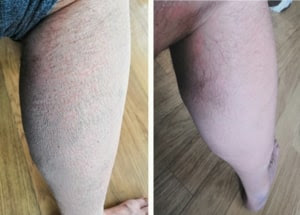Ichthyosis - Getting Rid of It
What is Ichthyosis?
In individuals with normal skin, the external layer, or the epidermis, contains cells that are continually separating and afterward being shed. Individuals with ichthyosis, nonetheless, either have skin cells that reproduce at an alarming rate that is a great deal speedier than they can be shed, or scales that don't shed by any stretch of the imagination, thusly causing a build-up of skin.
The result of this typically hereditary skin condition is that the phones heap onto top of each other, making a thick, layered appearance. Now and again, in extreme cases, for example, Jenna's, the skin turns out to be deplorably dry and breaks and might confine development. Usually, the legs are impacted, although the hands and arms are too.
The issue is because this sickness is generally interesting, many specialists and, surprisingly, a few dermatologists may not recognize the truth about it, therefore giving some unacceptable therapy - or recommending no treatment by any means.
There are several main types of ichthyosis, including:
- Genetic Ichthyosis Vulgaris. The most widely recognized type affects around 95% of individuals with Ichthyosis Vulgaris. The skin might seem typical when a youngster is conceived yet side effects normally show up by age five at the most recent. All parts of the body can be impacted and are frequently connected with atopic dermatitis. It is estimated that no less than one individual in each 300 in the US has this condition somewhat, and race and sex are irrelevant. A child of a parent with the problem has one out of two possibilities of having it too.
- Procured Ichthyosis. As the name recommends, this sort of problem is obtained and typically shows up in adulthood. It is exceptionally uncommon and is frequently credited to taking specific meds or because the victim has a hidden clinical or other condition, like HIV/Helps, sickness, particular kinds of disease, or glandular issues. Seriously poor nourishment may likewise assume a part in whether an individual acquires ichthyosis.
- Harlequin Ichthyosis. An intrinsic condition where a baby is brought into the world with toughness all around their body, which at last breaks and causes profound, difficult crevices. Unbelievably uncommon, the chances of having it are just a single in 1,000,000 as the two guardians should be carriers. Most kids brought into the world with this condition bite the dust not long after they are brought into the world because of loss of liquid, if they endure the future isn't exceptionally high.
Symptoms and Signs
It tends to be hard for specialists to analyze ichthyosis, although it is somewhat considered normal, as gentle structures are not difficult to mistake for other skin conditions. Nonetheless, as conditions, for example, skin inflammation frequently treated with steroids, to which ichthyosis doesn't answer (see beneath), getting the right diagnosis is significant.
Here are a few signs to keep an eye out for if you suspect you or your kids have ichthyosis Vulgaris, the most well-known kind:
- Scaling on the front of the legs
- Scaling on the back of the arm
- Scaling on the back or scalp
- Scaling on cheeks and brow, which is more unmistakable in children of a younger age
Remember that there are likewise sure regions of the body that are not affected by the condition, so if you have bothersome, textured skin in those spots there is a phenomenal opportunity it is something different. These regions are the stomach, face, front of the neck, and overlays before knees and elbows (normally prime skin inflammation spots).




Comments
Post a Comment